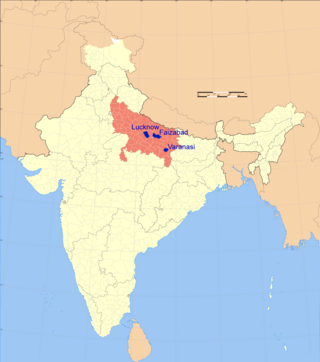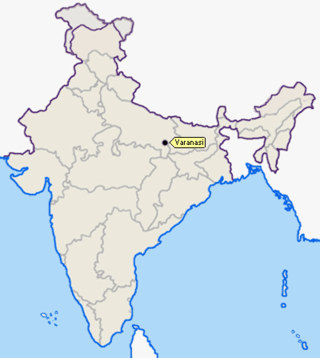Related Research Articles

Masjid-i-Jehan-Numa, commonly known as the Jama Masjid of Delhi, is one of the largest mosques in India.

Terrorism in India, according to the Home Ministry, poses a significant threat to the people of India. Compared to other countries, India faces a wide range of terror groups. Terrorism found in India includes Islamic terrorism, separatist terrorism, and left-wing terrorism India is one of the countries most impacted by terrorism.

The 2005 Delhi bombings occurred on 29 October 2005 in Delhi, India, killing 62 people and injuring at least 210 others in three explosions. The bombings came only two days before the important festival of Diwali, which is celebrated by Hindus, Sikhs, and Jains. The bombs were triggered in two markets in central and south Delhi and in a bus south of the city. The Pakistani Islamist terrorist group Lashkar-e-Taiba claimed responsibility for the attacks under the pseudonym of Islamic Inquilab Mahaz. The Indian Mujahideen is also suspected of involvement.
In March 2006, the Indian city of Varanasi witnessed a series of bombings in which at least 28 people were reportedly killed and 101 injured. Varanasi is considered holy by Hindus and is one of the oldest living city in the world. In June 2022, after 16 years of hearing, Ghaziabad district and sessions court convicted the mastermind and terrorist Waliullah Khan and sentenced him to death.

Jamia Masjid is a mosque in Srinagar, Jammu and Kashmir, India. Situated at Nowhatta in the Old City, the Mosque was commissioned by Sultan Sikandar in 1394 CE and completed in 1402 CE, at the behest of Mir Mohammad Hamadani, son of Mir Sayyid Ali Hamadani, and is regarded as one of the most important mosques in Kashmir. The mosque is located downtown, a central zone in the religio-political life in Srinagar. Thronged by Muslims every Friday, it is a prime tourist attractions of Srinagar. However in 2023 the Indian administration barred Jumat-ul-Vida in order to prevent heavy crowd coming to offer the prayers.

The 2006 Mumbai train bombings were a series of seven bomb blasts on 11 July. They took place over a period of 11minutes on the Suburban Railway in Mumbai, the capital of the Indian state of Maharashtra and the nation's financial capital. The bombs were set off in pressure cookers on trains plying on the Western Line Suburban Section of the Mumbai Division of Western Railway. The blasts killed 209 people and injured over 700 more.
The 2006 Malegaon bombings took place on 8 September 2006 in Malegaon, a town in the Nashik district of the Indian state of Maharashtra, 290 km northeast of Mumbai. The Maharashtra Anti-Terrorism Squad (ATS) initially blamed the bombings on the Students Islamic Movement of India (SIMI), but in a chargesheet filed in 2013 the NIA and ATS joint investigation and involved evidences pointed towards involvement of an extremist group Abhinav Bharat in the said bombings.
The Mecca Masjid blast occurred on 18 May 2007 inside the Mecca Masjid, a mosque located in the old city area of Hyderabad, capital of the Indian state of Telangana located very close to Charminar. The blast was caused by a cellphone-triggered pipe bomb placed near the Wuzukhana, a spot where ablutions are performed. Two more live IEDs were found and defused by the police. Sixteen people were reported dead in the immediate aftermath, of whom five were killed by the police firing after the incident while trying to quell the mob.

Six consecutive serial blasts rocked Lucknow, Varanasi and Faizabad courts in Uttar Pradesh on 23 November 2007 afternoon in a span of 25 minutes, in which reportedly many people were killed and several others injured.
The 13 September 2008 Delhi bombings were a series of five synchronised bomb blasts that took place within a span of few minutes on Saturday, 13 September 2008 at various locations in Delhi, India. The first bomb exploded at 18:07 IST, and four other blasts followed in succession, with at least 20 people killed and over 90 injured.

The Fatehpuri Mosque is a 17th-century mosque in India located at the western end of the oldest street of Chandni Chowk, in the Old Delhi neighbourhood of Delhi, India. It is opposite the Red Fort on the opposite end of Chandni Chowk.
The 2010 Pune bombing, also known as 13/7 and the German bakery blast, occurred on 13 February 2010 at approximately 19:15 Indian Standard Time, when a bomb exploded at a German bakery in the Indian city of Pune, Maharashtra. The blast killed 18 people, and injured at least 60 more, including an Italian woman, two Sudanese students and an Iranian student.
The 2010 Jama Masjid attack occurred on 19 September 2010 when two gunmen on a motorcycle fired at a tourist bus near Gate 3 of the Jama Masjid in Old Delhi, India and injured two Taiwanese tourists. The incident provoked fears about security for the upcoming Commonwealth Games in Delhi. About three hours later a car parked approximately 150 meters from the spot caught fire, apparently due to a minor blast.
The Batla House encounter case was an armed Delhi Police operation to arrest terrorists of the Indian terror outfit Indian Mujahideen, hiding in a flat in the Batla House area of Jamia Nagar, Okhla, on 19 September 2008. The operation resulted in the deaths of two terrorists and one police officer, Inspector Mohan Chand Sharma, with the remaining terrorists arrested. On 15 March 2021, one of the arrested Ariz Khan alias Junaid, was sentenced to death for the murder of Inspector Sharma.

The 2010 Varanasi bombing was a blast that occurred on 7 December 2010, in one of the holiest Hindu cities, Varanasi. The explosion occurred at Sheetla Ghat, adjacent to the main Dashashwamedh Ghat, where the sunset aarti, the evening prayer ritual to the holy river, Ganges had commenced, on these stone steps leading to it, where thousands of worshipers and tourists had gathered. It killed a two-year-old girl, sitting on her mother's lap, the mother was one of three critically injured, more than 38 other people were injured. In the ensuing panic after the blast, a railing broke causing a stampede leading to an increase in the number of injuries. The bomb was hidden inside a milk container on the Sheetla Ghat. The blast occurred a day after the anniversary of the 1992 Babri Masjid demolition, in which a mosque was demolished at Ayodhya leading to nationwide religious riots killing over 2,000 people. Subsequently, the Islamist militant group, Indian Mujahideen, claimed responsibility of the blast, via email to Indian media. This is also the second terrorism-related incident in the city which was rocked by the serial blasts of 2006, in which 28 people were killed, it included an explosion at the Sankatmochan Temple, some two kilometres away.
The Ajmer Dargah bombing occurred on 11 October 2007, in the courtyard of Sufi maulana Moinuddin Chishti in Ajmer, Rajasthan, India, after the Iftar period had started. On 22 March 2017 a Special NIA Court convicted three Rashtriya Swayamsevak Sangh pracharaks Devendra Gupta, Bhavesh Patel and Sunil Joshi. Sunil Joshi and Devendra Gupta were found guilty on charges of conspiracy and Bhavesh Bhai Patel was found guilty of planting the explosive on the blast site. Gupta and Patel were awarded life imprisonment. Sunil Joshi had been found shot dead in mysterious circumstances soon after the blast in Dewas, Madhya Pradesh.
The 2011 Delhi bombing took place in the Indian capital Delhi on Wednesday, 7 September 2011 at 10:14 local time outside Gate No. 5 of the Delhi High Court, where a suspected briefcase bomb was planted. The blast killed 15 people and injured 79. Harkat-ul-Jihad al-Islami claimed responsibility for the attack, and is believed to have carried out the attack with support from the Indian Mujahideen, it stated motive was the commuting of the death sentence for 2001 Indian Parliament attack convict Afzal Guru.

Jama Masjid, also known as Jumah Mosque or Jami' Masjid, is a mosque in Ahmedabad, and was built in 1424 during the reign of Ahmad Shah I. The inscription on the central mihrab commemorates the inauguration of the mosque on the 1st Safar A.H. 827 or January 4, 1424 A.D. by Sultan Ahmad Shah I. The mosque lies in the old walled city, and it is situated outside Bhadra Fort area. The old walled city is divided into separate quarters or pols, and the Jami' Masjid is found on the Gandhi Road. Along the south side of the road, the mosque is a short distance beyond the Teen Darwaza or Tripolia Gate.
On 12 May 2017, a suicide bombing targeted the convoy of the Deputy Chairman of the Senate of Pakistan, Abdul Ghafoor Haideri, a JUI (F) member, on the N-25 National Highway in Mastung District, Balochistan, Pakistan. At least 28 people were killed; 40 others were injured, including the Senator. The Islamic State of Iraq and the Levant claimed responsibility for the attack. The attack was an unsuccessful attempt to assassinate Haideri.
The 2019 Kabul mosque bombing occurred around 01:20pm on 24 May 2019 when worshippers and the imam were inside the mosque for Friday prayer. The explosives were placed in the mosque's microphone which was used by the imam. At least three people were killed, including the imam, Samiullah Rayhan, and nearly 20 people were injured. So far, no group or individual has claimed to be responsible for the attack.
References
- ↑ "Report on CNN IBNLive". Archived from the original on 15 April 2006. Retrieved 14 April 2006.
- ↑ "Twin blasts rock Jama". Rediff.com . 14 April 2006.
- ↑ "Series of explosions injures 27 in India". Irish Examiner. 14 April 2006.
- ↑ "Column by B Raman". Rediff.com . 18 May 2007.